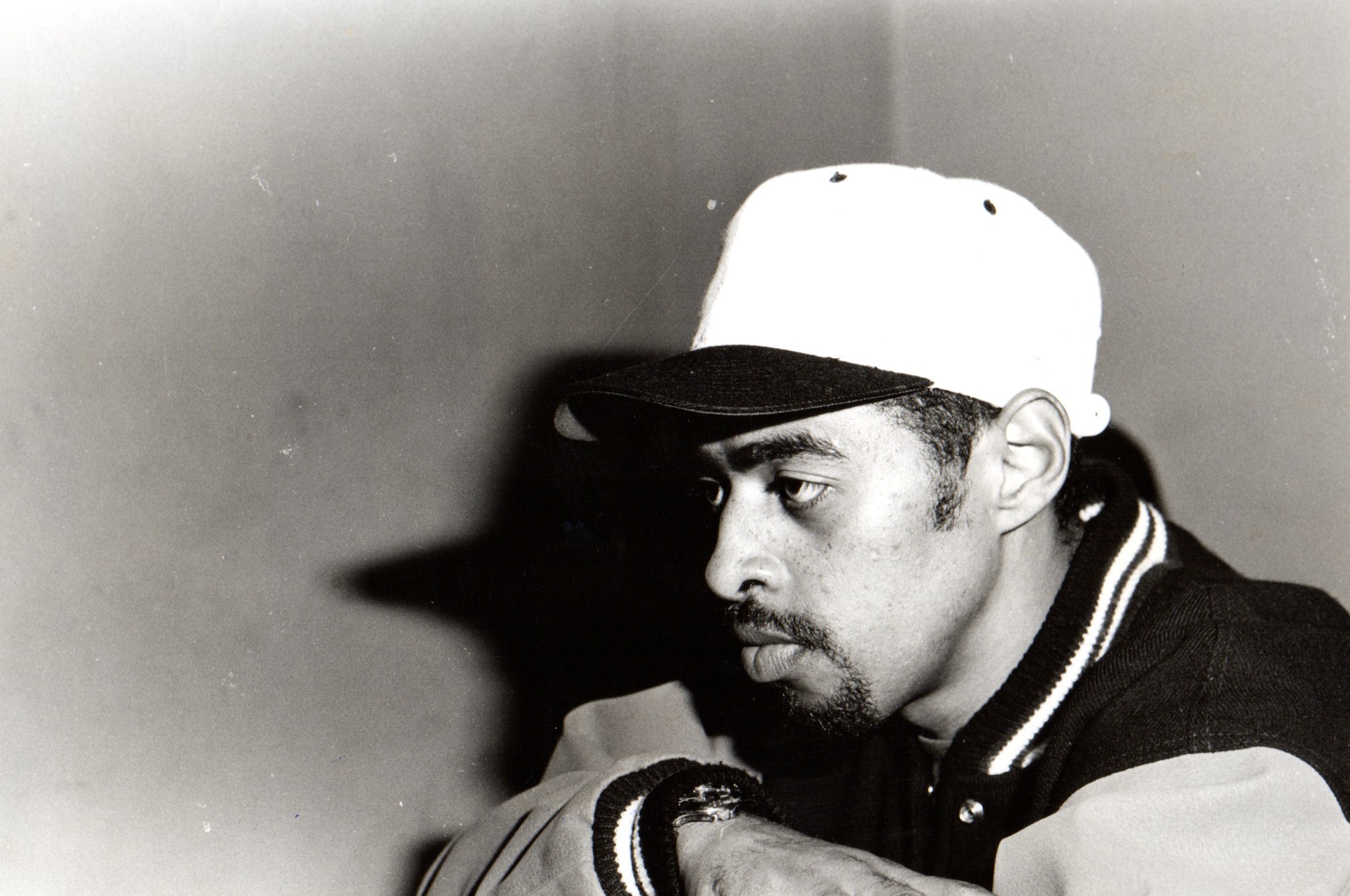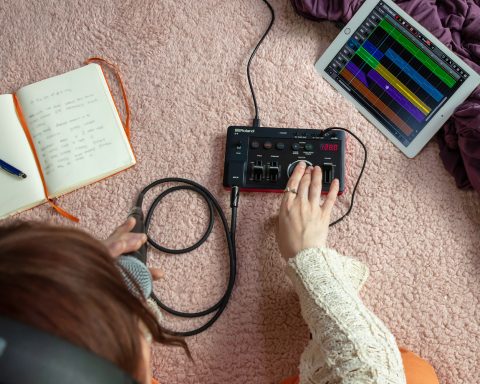São Paulo, Brazil’s cultural melting pot, has provided rich soil for beatmaking to flourish. Beginning with hip-hop’s inception in the city, a kaleidoscopic array of talent has emerged—from independent imprints to chart-topping collectives. In addition to its homegrown talent, São Paulo has inspired some of the global beat community’s brightest stars. Explore this colorful community with an in-depth history of its close-knit ecosystem of artists, producers, and labels.

Hip-Hop Beginnings
São Paulo’s beat scene history is deeply intertwined with its hip-hop history. The city’s hip-hop story began in the city center of São Bento Subway station. There, around 1987, people would gather to bang on cans and breakdance. Hip-hop quickly made its way to shows and parties like Zimbabwe, Chic Show, and Black Mad. International acts Kool Moe Dee and Public Enemy played shows in the city in 1988 and 1991, respectively.
Around the same time, local rap groups started to emerge. In 1988, Thaide & DJ Hum appeared on the Hip-Hop Cultura de Rua compilation. The track “Corpo Fechado” is now regarded as a classic old-school hip-hop record. In 1997, Racionais MC’s brought rap music to a broader audience with the release of Sobrevivendo no Inferno.
An Independent Spirit
Recorded and released independently, this music went way beyond rap circles. These songs got played on several major radio stations and won the group the people’s choice award at MTV Brazil’s annual award show. Overall, Racionais’ sound would become a foundation for nearly all subsequent generations of São Paulo rappers and beatmakers. Their DJ, KL Jay, would produce rapper Xis’ album, Fortificando a Desobediência and single “A Fuga.” His album, KL Jay na Batida Vol. 3, arrived two years later.
"The city's hip-hop story began in the city center of São Bento Subway station. There, around 1987, people would gather to bang on cans and breakdance."
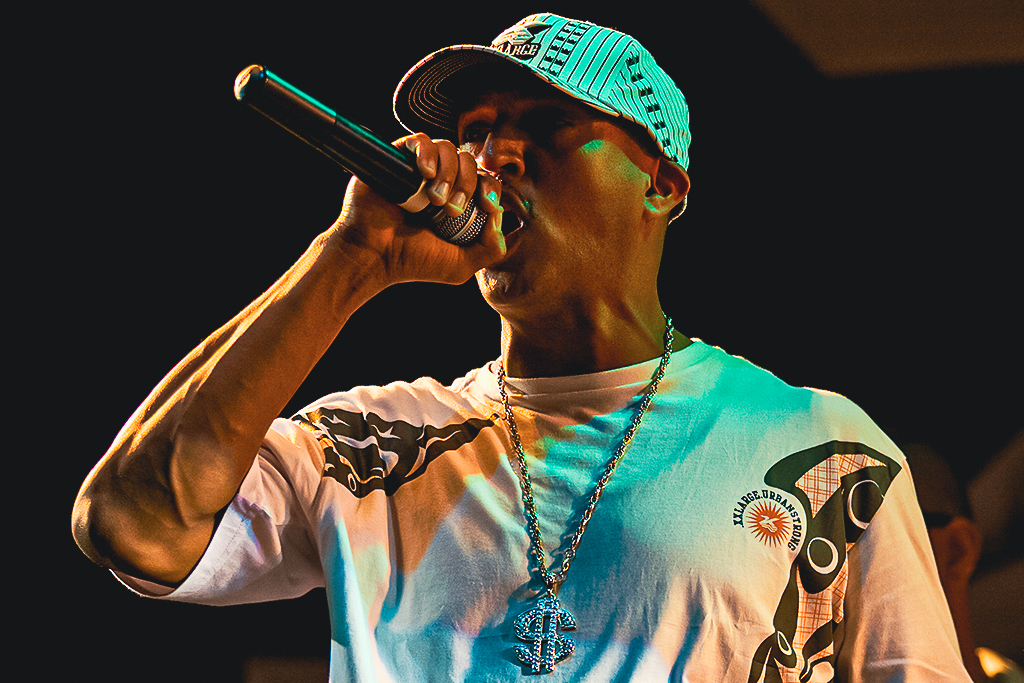
Rap Meets Samba
The music on Eu Tiro É Onda draws inspiration from Pharcyde’s Runnin’, produced by J Dilla. Yet, it creates a universe of its own, based on superimposing rap drums with samba and bossa nova samples. Musicians who would later become beatmaker favorites are also featured, like João Donato and Dom Um Romão, who played on the track “Mantenha o Respeito.”
In addition, DJ Nuts, who produced most of the tracks on the album, had his own group, Nitro, with São Paulo rapper Paulo Napoli. While the duo never progressed beyond a few compilations, hip-hop heads revere their cassette-only EP as a classic.
The Madlib Dilla Effect
Madlib, as well as Dilla, had a significant influence on São Paulo beatmakers in the early ’00s. His mythology of coming to São Paulo in 2002 and making beats on a BOSS SP-303 is well documented. Some of these sounds appear on Madvillainy and other Stones Throw releases from that time. Still, few people mention that he borrowed DJ Nuts’ SP-303. To this day, Nuts still has memory cards with Madlib beats.
"In Brazil, Madlib and Dilla were also important because they valued Brazilian music. This respect was evident through their use of samples and DJ mixes."
Brazilian Inspiration
Madlib and J Dilla were essential in bringing the focus to beat music in the early ’00s. Because of them and other producers, beats evolved from playing a supporting role for the MC to shine to taking the spotlight. Beat tapes were no longer a means to sell beats to rappers but proper albums.
In Brazil, however, Madlib and Dilla were also important because they valued Brazilian music. This respect was evident through their use of samples and DJ mixes. In a musical culture centered on the United States, it was inspiring for Brazilian beatmakers and beatmakers-to-be to hear local records used as source material for some of the era’s most creative producers.

A Collective Style
Instituto, a production collective formed by Daniel Ganjaman, Rica Amabis, and Tejo Damasceno, released Coleção Nacional in 2002. The album featured local rappers and musicians performing over beats created by the trio. A highlight on the album is “Cabeça de Nêgo,” by rapper Sabotage, who also had an album produced by Ganjaman. Cosa Nostra, the label operated by Racionais MC’s, released Rap é Compromisso.
Z’africa Brasil, also featured on Coleção Nacional, released Antigamente Quilombos Hoje Periferia in 2002, produced by drummer and electronic musician Érico Theobaldo. Instituto’s Rica and Tejo also made Velha Guarda 22, an album by rap duo Mamelo Sound System, co-produced by American hip-hop veteran Scotty Hard. The album featured Brazilian hidden gem samples and live instrumentation. The latter included a track featuring drum legend Tony Allen and local singer Céu. Rica and Tejo would go on to score movies and series, while Ganjaman would become known as the producer for Criolo’s hit album, Nó Na Orelha.

"To the Southeast of São Paulo, the ABC metropolitan region also played an essential part in local hip-hop and beat culture."
Learn Your ABC
To the Southeast of São Paulo, the ABC metropolitan region also played an essential part in local hip-hop and beat culture. The area is home to boom bap soldier Black Alquimista, from São Bernardo city. He was a founding member of Posse Hausa in 1993, then co-founded the hip-hop group Alquimistas a few years later. They made a demo in 1999 and several albums in the decades to follow. Black Alquimista also released the beat tape Pensamentos in 2018 and owns a small museum’s worth of vintage samplers.
Founded in 1998, Pau-De-Dá-Em-Doido is a label with roots in Santo André, a city in the ABC metropolitan area. Created by members of the rap group A.R.M.A.G.E.D.O.N., Enézimo and DJ Nato PK ran the label in the following decades. Highlights from its catalog, all produced by Nato, include Difícil Ser Honesto by Enézimo and Minha Parte by Stéfanie. Nato is still active today, playing at parties like Só Disco Salva and performing with rapper Ogi.
Trama Center
Trama, a label founded in 1998 and active in the following decade, is mainly remembered for its new Brazilian singer/songwriter roster. Within the hip-hop world, though, it was a label that released many alternative São Paulo hip-hop acts. There is no doubt a new wave of rappers and beatmakers was making music in a way that deviated from the established São Paulo sound.
Trama signed veteran Thaíde, who had A&R credits on several rap releases. They also released, as a collaboration with label 4P, KL Jay’s and Xis’ albums. Trama was essential for releasing Brazilian-pressed CDs of international titles like The Pharcyde’s Labcabincalifornia. These versions were much more affordable.
Several new school rap acts got featured on the Trama-released Direto Do Laboratório compilation. These included four groups which comprised the crew named Rhima Rhara: Rua de Baixo, Ascendência Mista, Mzuri Sana, and Elo da Corrente. It’s worth noting how file sharing and CD burners changed how music circulated. Even if they weren’t superstars, underground musicians from overseas could influence local beatmakers.
"File sharing and CD burners changed how music circulated. Even if they weren't superstars, underground musicians from overseas could influence local beatmakers."
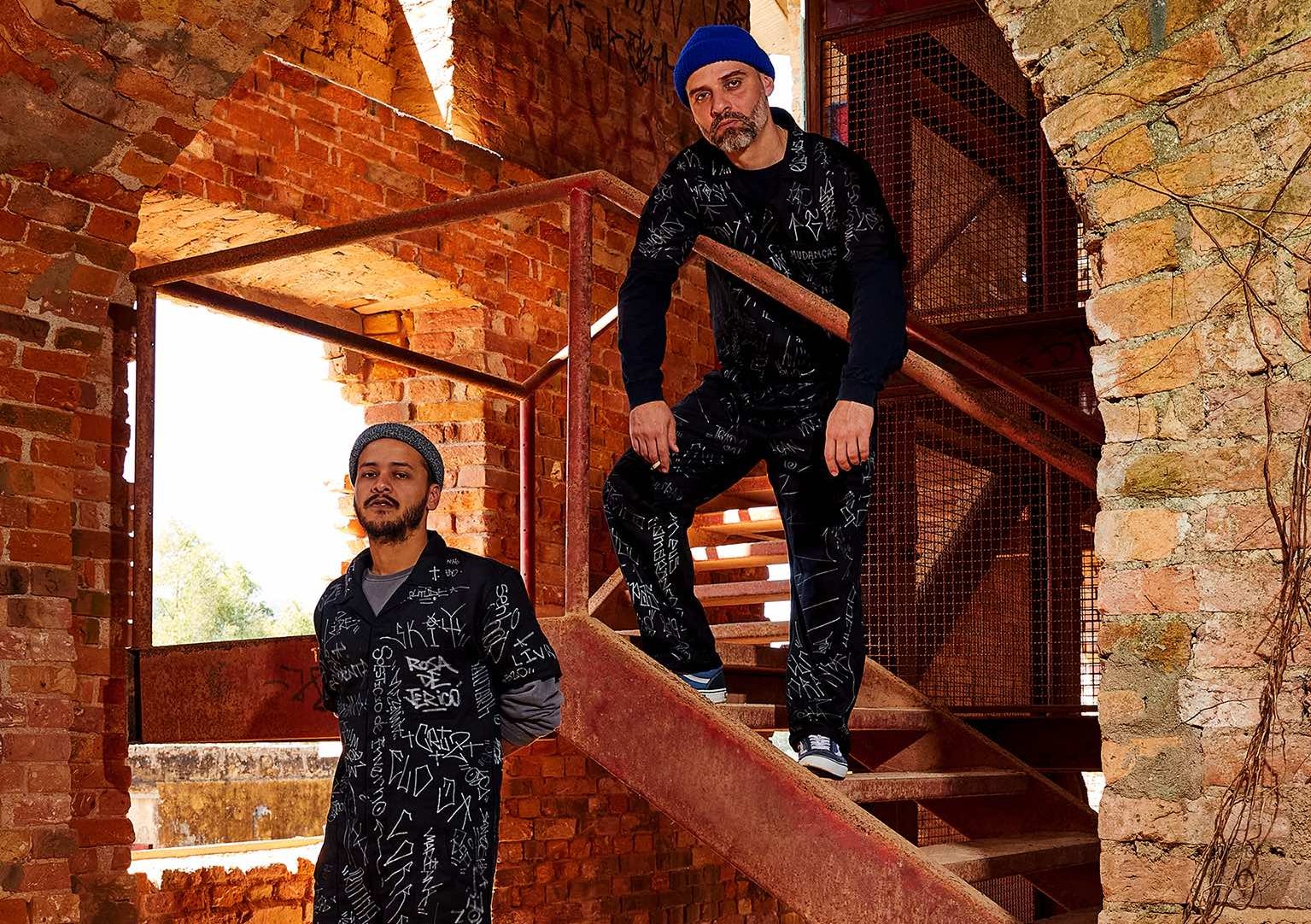
“Being part of Rhima Rhara was very important, especially being close to Rua de Baixo and Ascendência Mista. It was inspiring to meet people like us. We were the youngest in the crew and learned a lot.
Madlib and Dilla greatly influenced our sound in the beginning, around the time we made Após Algumas Estações, aesthetically speaking. The way the kick hits, the sloppy snare, dusty samples. There was freedom in the way they produced that wasn’t common back then.
The SP-303 was my second sampler after owning the SP-202. I found my sound making music on the 303. I bought it in 2005, and since then, every Elo da Corrente album has beats made on it. I really like the sound texture and how quick it is for making beats.”
PITZAN (ELO DA CORRENTE)
Rare Finds
Also noteworthy is that hardware samplers were still rare in São Paulo and Brazil but not as rare and unattainable as in the ’90s. Ascendência Mista’s Produto Mentalfaturado, produced mainly by group member Renato Venom, got released on CD-R and sold in hip-hop shops in the city center and on merch tables. Ascendencia Mista member Munhoz would release a producer album, which included the Rhima Rhara posse cut “Bicho de 10 Cabeças.”
Elo da Corrente released their debut album, Após Algumas Estações, in 2007. Member Pitzan, who produced half of the beats, relied on the SP-303 and its distinct sonic flavor. On their 2014 album Cruz, Elo da Corrente would go on to work with some of the musicians they might have sampled before, such as Arthur Verocai and Danilo Caymmi. Mzuri Sana’s Parteum, who also worked at Trama’s offices, besides being an artist on the label, would develop a solo career starting in 2004 with the album Raciocínio Quebrado and spanning to this day with several releases, including rap albums and beat tapes.
"Hardware samplers were still rare in São Paulo and Brazil but not as rare and unattainable as in the '90s."
On the Production Line
Another important character is Kamau, from the Tucuruvi neighborhood, in São Paulo’s Northern area. His first rap group, Consequência, was featured on KL Jay’s album. Soon after, the group released Prólogo EP on CD-R. Like much of this music, it’s nonexistent on official streaming services. Kamau helped make beats for the EP and shared mic duties with fellow rapper Sagat. Starting in 2003, Kamau hosted free-to-come weekly hip-hop events at Galeria Olido in the city center.
Every Thursday night, MCs-to-be could sign up for the open mic, which happened before a show by a local group. On two occasions, the event got promoted as Linha de Produção, Portuguese for “production line.” Four beatmakers performed using hardware samplers, which were still difficult to find in the city.
These were the times the place got the most crowded, and window panes became sweaty beyond sanitary measures. Some of the beatmakers featured were Venom and Munhoz (no longer members of Ascendência Mista), Kamau himself, and Lum. The latter was then a member of the Rio de Janeiro-based Quinto Andar crew.
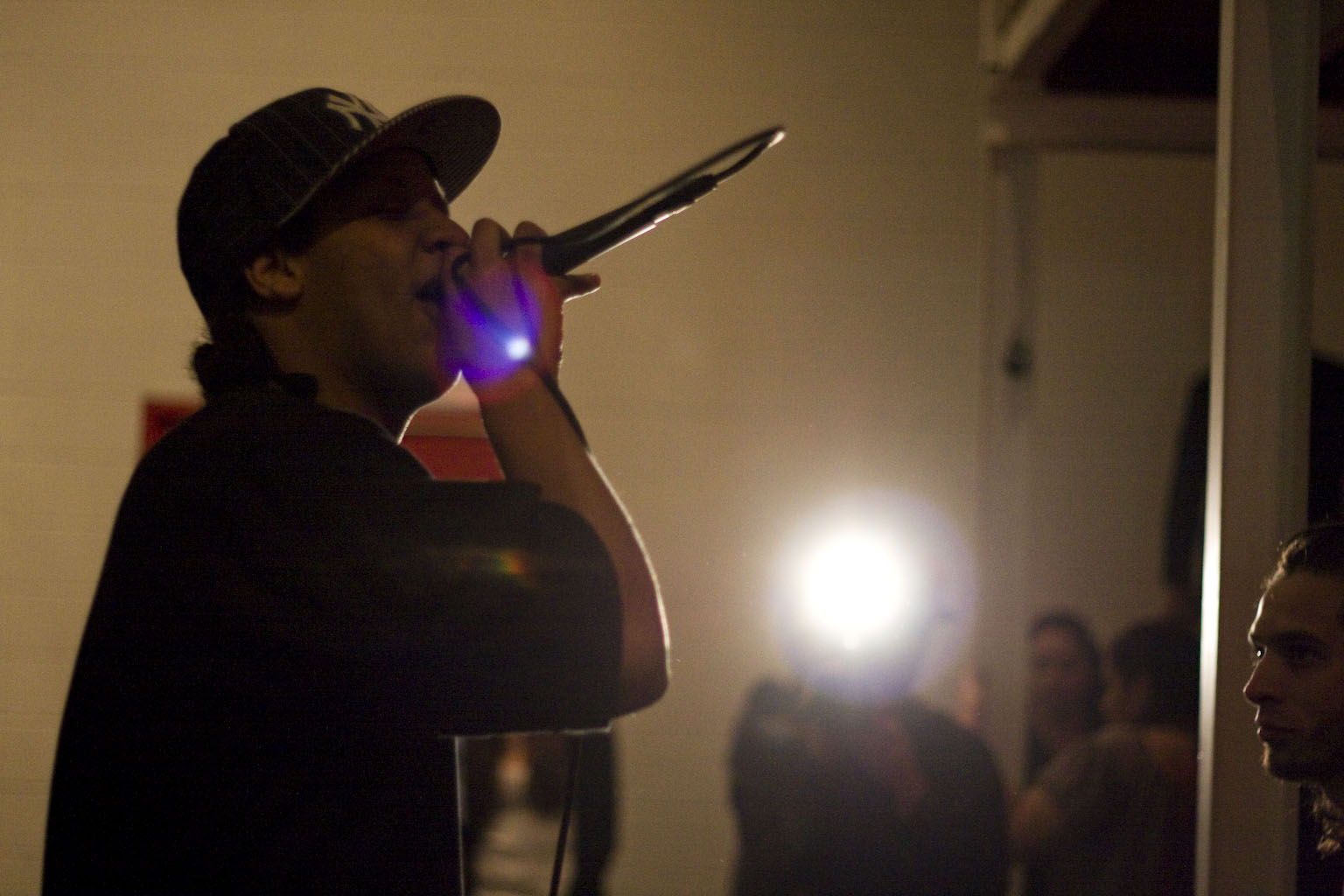
"MCs-to-be could sign up for the open mic. Twice, the event got promoted as Linha de Produção, Portuguese for 'production line.'"
Beats and Verses
In 2006, Kamau provided beats and verses for Escuta Aí, an album by Simples. Kamau shared the mic with younger MCs Henrick Fuentes and Stefanie (also featured on Pau-De-Dá-Em-Doido projects). His solo album came two years later, featuring production by himself, Munhoz, and Parteum. It also contained contributions from Nave and DJ Primo, both from Curitiba, a city located 250 miles south of São Paulo.
Nave was originally a member of the group Savave and handled most production on their 2008 EP, Feito Sob Medida. He would produce hit records for artists such as Marcelo D2 and was the musical director on Emicida’s Grammy-winning album, AmarElo. Nave recently went beyond hip-hop beats, working with songwriters like Luedji Luna on the single “Ameixa.”
DJ Primo moved to São Paulo around 2000 and became Marcelo D2’s DJ in 2003. He was active in São Paulo’s party scene and the studio, producing and recording scratches on several records. These included Periferia by Helião & Negra Li, featuring Racionais’ Mano Brown. On a 2006 J Dilla tribute, he scratches and rocks the SP-303 along with DJ Nuts and drummer Pupillo. Unfortunately, Primo would unexpectedly pass away in 2008 due to pneumonia complications.
“Sants and I started Beatwise Recordings to create a hub for producers, a platform for young creators to release music and achieve notoriety. It started because of SonoTWS. When we listened to his productions, we concluded we had to start releasing music.
I was always in love with vinyl and physical media in general. Vinyl, CDs, and tapes greatly influenced our generation of 35+ year-olds. Besides being affordable and looking good as a souvenir, the cassette tape was favored by beatmakers because of its sonic texture.
The SP-404 was the perfect machine for what we were doing, for its simplicity and effects. A big part was how easy it was to work with sample chops, overlay samples, and find a groove. Everyone uses it differently. Because of the beat repeat effects, filters, and compressors, it really matched the sound we were going for.”
CSRV (BEATWISE RECORDINGS)
A Wise Transition
Beatwise Recordings was founded in 2013. By then, Stones Throw had started transitioning from hip-hop and beat music to indie/bedroom pop. At the same time, labels like Flying Lotus’ Brainfeeder were now established. Websites like SoundCloud and Bandcamp made it easier for artists and curators to start imprints. Beatwise founders CESRV and Sants developed a sonically diverse roster. Artists like Soul One bridged the gap between hip-hop and electronic experimentation, alongside Mr. Abud, who created dusty and soulful head-nodding beat tapes.
Tape Time
The fact that they started to release their music on cassette propelled my idea of starting Ukiyo Beat Tapes. I released two beat tapes by Elo Da Corrente’s Pitzan and Flores by SonoTWS, originally a Beatwise artist. Pitzan’s and Sono’s Ukiyo releases have the SP-303 sound from start to finish. Pitzan would create whole beats on the small sampler, as he did for his rap group. Sono would make them on a sampler workstation, but run the music through the 303 classic Vinyl Sim FX.
After moving to Salvador, Bahia, Beatwise founder Sants would collaborate with instrumental band BAGUM on their Vento EP. At the same time, CESRV would release Brime, producing grime-inspired music alongside rappers Febem and Fleezus. SonoTWS created Tired of People, an imprint to release his productions, including beat tapes and compilations such as Otra Fita. His current project is Febre 90’s, a duo with Rio rapper Pumapjl.


“Playing live and watching other beatmakers play was very important for exchanging ideas. Seeing that even on the same equipment, each beatmaker has their own workflow and uses the sampler in their own way. There’s no right or wrong way—that made me search more and more for my style and identity.
The way I see it, every label has its curation, its references. When creating Tired of people, I wanted to bring my street and graffiti experience by inviting currently active graffiti writers to create artwork for releases and videos. I learned a lot about managing a label as an artist released on Brazilian and foreign labels. Being in control of every part of the process, I achieved a high-quality level, both musically and in merch.”
SONOTWS
Live Beats Explode
Starting in 2014, more and more events with live beat performances started. More often than not, performances featured the SP-404. Beatwise artists, Ukiyo artists, and many others frequently played and watched each other at parties such as Metanol, events at urban art galleries such as Pico (owned by local artist Flip and DJ Mako), and record store Casa Brasilis. In 2017, while playing at Brasilis, I was approached by Rotamassia. He recorded interviews with myself and three other beatmakers for a documentary on São Paulo beat music.
A Beatmaking Gathering
Casa Brasilis was also home to Beat Brasilis, an event that began in 2015. Beatmakers would gather in the afternoon to sample from the same record and share their creations in the evening. At most, five people showed up during the first weeks. Still, the number quickly grew to 20-30 people weekly with their samplers, which were more common and attainable for Brazilians.
When the global pandemic hit in 2020, the event went online, and even more people from around São Paulo participated. Beginners could make and play their beats along with veterans such as Kamau and Venom. From real life to online events, comradery was prevalent. Also during the pandemic, Black Alquimista, a frequent face at Beat Brasilis, started Beat Express, a monthly Twitch-based festival in which four beatmakers would perform before he interviewed a guest.

“Even when practicing acoustic bass in school, my goal was to create my own sound, not just reproduce what had been made. As time went by, I realized it was hard to find people with a similar vision and musical ideas as my own. That made me question what I was doing by practicing the acoustic bass. I ended up selling the instrument and buying an electric bass and, later on, an SP-404, where I could make my music ideas a reality.
I first saw the SP being used by Guilherme Granado at a Bodes & Elefantes show. He was using it plugged into a guitar amp with lots of distortion. Guilherme showed me what I could do on the sampler, intuitively, without a computer. I thought it was really dope. I ended up buying the 404 because of that.
When I started searching for videos of performances on the SP-404, the first one that grabbed my attention was Teebs playing at Sonar. After that, Ashtrejenkins and Ras G at Boiler Room. I felt like this was it. I can now say the SP saved me from becoming a square musician. It took me to different places, with so many more possibilities in sound.”
EVERTON SANTOS
Experimental New Directions
Recent years have seen beat aesthetics, along with the SP-404, absorbed by experimental musicians. A key player in this field is Guilherme Granado, who used the SP-303 on his Bodes & Elefantes album and frequently uses the SP-404 in his live setup. Paris-born and São Paulo-based Sue, a member of the band Ozu, uses the 404 along with an electric guitar, pedals, and a computer during solo sets.
Last but not least, Everton Santos plays bass as a supporting musician for singers such as Bebé Salvego and Pedro Binneman. He relies on the SP-404 for building whole songs or processing the bass on his solo project. And like the São Paulo beat scene itself, Brazilian artists continue to stretch the limits of genre and sound. These pioneering beatmakers, DJs, MCs, singers, and instrumentalsts use the tools at their disposal to reflect the world around them.



